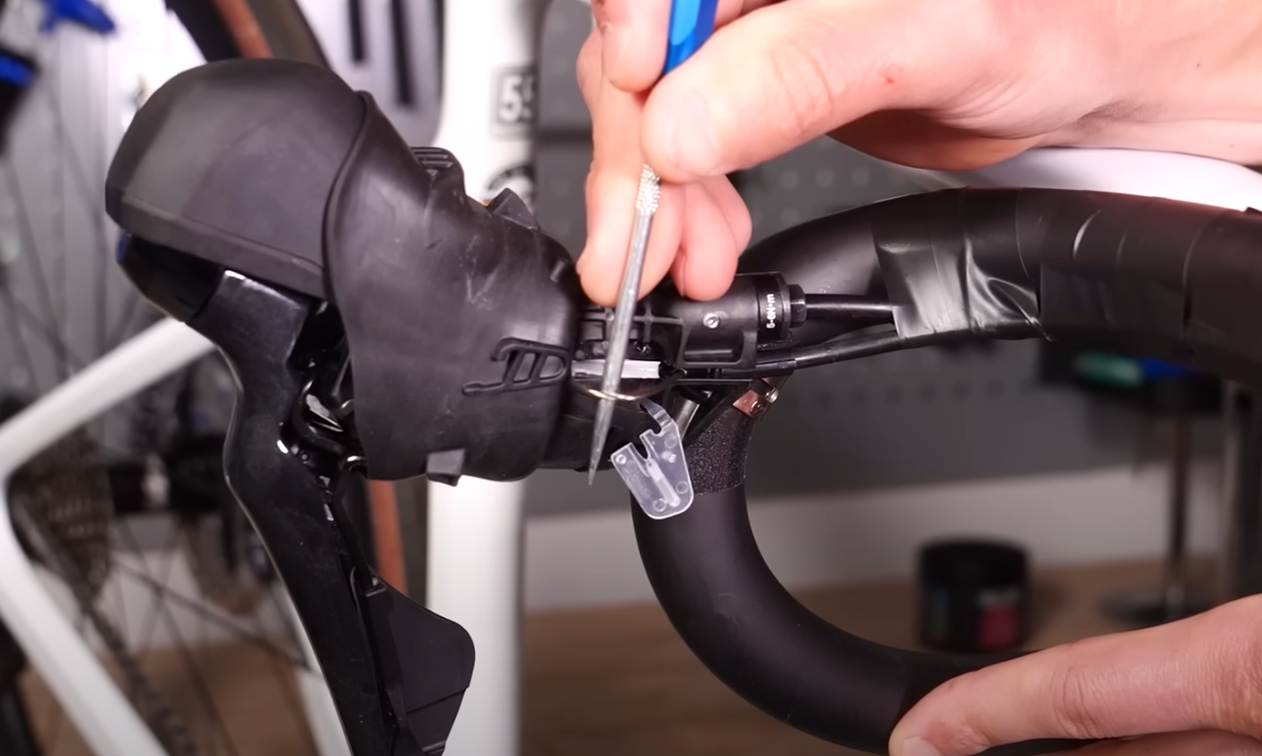How to tighten bike brakes? Ensuring your bicycle’s brakes are properly adjusted and functioning at their best is a crucial aspect of maintaining your two-wheeled companion. Whether you’re an avid cyclist or a casual rider, understanding how to tighten and maintain your bike’s brakes can greatly enhance your safety, control, and overall riding experience.
In this comprehensive guide, we will walk you through the step-by-step process of tightening and adjusting your bicycle’s brakes, empowering you to take control of your bike’s performance and keep it in top-notch condition. From the fundamentals of brake mechanics to the essential tools and techniques, this article will equip you with the knowledge and confidence to tackle this essential maintenance task and keep your bike braking efficiently.
Prepare to master the art of tightening bike brakes and unlock the full potential of your two-wheeled ride.

Understanding Bicycle Brake Mechanics
Before delving into the process of tightening bike brakes, it’s essential to understand the underlying mechanics and components that make up a bicycle’s braking system.
Key Brake Components
Familiarizing yourself with the main components of a bicycle’s braking system will provide a solid foundation for the tightening and adjustment process.
Brake Pads
The brake pads are the crucial interface between the brake mechanism and the wheel’s rim, responsible for generating the friction that slows down and stops the bike.
Brake Calipers
The brake calipers are the components that clamp down on the wheel’s rim, applying the necessary force to activate the braking action.
Brake Cables and Housing
The brake cables and their surrounding housing are the conduits that transmit the rider’s braking input from the handlebars to the calipers.
Brake Types and Their Quirks
Bicycles can be equipped with different types of brakes, each with its own unique characteristics and considerations when it comes to tightening and adjusting.
Rim Brakes
Rim brakes, such as cantilever, linear-pull (V-brakes), and caliper brakes, are the most common type and often the easiest to maintain.
Disc Brakes
Disc brakes, both mechanical and hydraulic, offer superior braking performance but require more specialized knowledge and tools for proper adjustment.
Steps to Tighten and Adjust Bicycle Brakes
With a basic understanding of brake mechanics, you can now dive into the step-by-step process of tightening and adjusting your bicycle’s brakes to ensure optimal performance and safety.
Preparing the Bike
Before you begin the tightening and adjustment process, it’s essential to properly prepare your bicycle and create a stable work environment.
Securing the Bike
Securely clamp your bicycle in a bike repair stand or alternatively, flip it upside down on a sturdy surface.
Gathering the Necessary Tools
Assemble the appropriate tools, such as a set of wrenches, pliers, and a brake-specific tool (if required), to ensure a smooth and efficient tightening process.
Tightening Rim Brakes
For bicycles equipped with rim brakes, follow these steps to tighten and adjust the brake components.
Adjusting Brake Pad Alignment
Ensure the brake pads are properly aligned with the wheel’s rim, making contact at the correct angle and position.
Tightening Brake Calipers
Secure the brake calipers firmly to the frame or fork, verifying that they are centered and evenly spaced around the rim.
Adjusting Brake Cable Tension
Fine-tune the brake cable tension to achieve the desired braking response and lever feel, ensuring smooth and consistent operation.
Tightening Disc Brakes
For bicycles equipped with disc brakes, the tightening and adjustment process may vary slightly but follows a similar approach.
Checking Rotor Alignment
Ensure the disc rotor is properly aligned and centered within the brake caliper for optimal braking performance.
Adjusting Caliper Position
Position the disc brake caliper so that the pads make even contact with the rotor, and tighten the mounting bolts securely.
Ensuring Brake Lever Feel
Adjust the brake lever position and reach to provide a comfortable and responsive braking experience.
Finalizing the Adjustment
After tightening the brake components, perform a comprehensive check to ensure the brakes are functioning correctly and safely.
Testing Brake Responsiveness
Apply the brakes firmly and verify that they provide a solid, responsive feel and effectively slow down or stop the bicycle.
Performing a Test Ride
Take your bicycle for a short test ride to evaluate the brakes’ performance in real-world conditions and make any necessary final adjustments.
Maintaining Bicycle Brakes
Proper maintenance is crucial to ensure your bicycle’s brakes continue to perform at their best and remain safe over time.
Periodic Brake Inspection
Regularly inspecting your bicycle’s brakes can help identify any issues or wear and tear before they become a safety concern.
Checking Brake Pad Condition
Examine the brake pads for signs of wear, such as thinning or uneven surfaces, and replace them when necessary.
Inspecting Brake Cable and Housing
Look for any fraying, kinking, or corrosion in the brake cables and housing, and replace them if needed.
Cleaning and Lubrication
Keeping your bicycle’s brakes clean and well-lubricated can enhance their performance and longevity.
Cleaning Brake Components
Gently clean the brake pads, calipers, and surrounding areas to remove any built-up dirt, grime, or residue.
Applying Lubricant
Apply a small amount of bike-specific lubricant to the pivot points and moving parts of the brake system to ensure smooth operation.
Addressing Brake Issues
If you encounter any problems or concerns with your bicycle’s brakes, it’s essential to address them promptly to maintain safety and performance.
Troubleshooting Common Issues
Be prepared to identify and address common brake-related issues, such as brake pad wear, cable problems, or alignment issues.
Seeking Professional Assistance
If you’re unsure about the diagnosis or repair of a more complex brake problem, consult a qualified bicycle mechanic for expert guidance and service.
Conclusion: Empowering Bicycle Riders Through Brake Mastery
Mastering the art of tightening and maintaining bicycle brakes is a valuable skill that can greatly enhance your riding experience and, more importantly, your safety on the road or trail. Through this comprehensive guide, you have gained a deeper understanding of the underlying mechanics, the step-by-step process for tightening and adjusting both rim and disc brakes, and the essential maintenance practices to keep your bicycle’s braking system in top-notch condition.
By following the techniques and strategies outlined in this article, you can now confidently take control of your bicycle’s braking performance, ensuring that your two-wheeled companion responds accurately and reliably whenever you need to slow down or stop. This newfound knowledge and hands-on expertise will not only empower you to maintain your bike’s brakes but also instill a sense of self-reliance and confidence in your overall cycling abilities.
As you continue to embark on your cycling adventures, remember the importance of regularly inspecting, tightening, and maintaining your bicycle’s brakes. Stay vigilant, be proactive in addressing any issues, and don’t hesitate to seek professional assistance when necessary. By prioritizing the health and performance of your bike’s braking system, you’ll be able to ride with the assurance that your safety is firmly in your own hands.
Unlock the full potential of your bicycle’s braking performance by mastering the art of tightening and maintaining your bike brakes.



